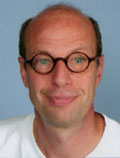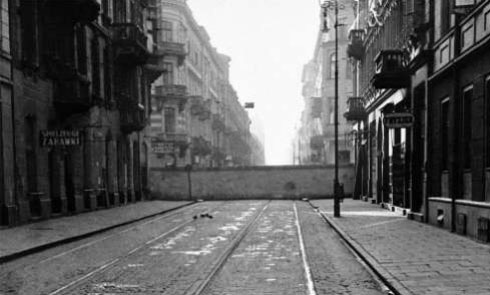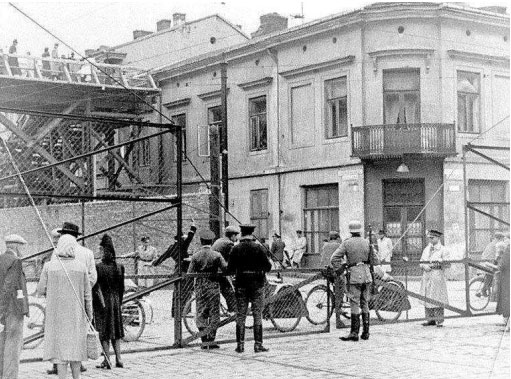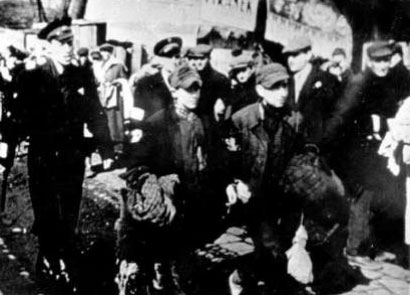
Dirk Roodzant
Dirk Roodzant is a high school teacher at the Zeldenrust-Steelant College at Terneuzen in the Netherlands. He is also connected with the University of Amsterdam’s Department of Holocaust and Genocide Studies, pursuing a PhD thesis on the Armenian Genocide.
In January 2008, Dirk Roodzant attended a Seminar for Dutch Educators at the International School for Holocaust Studies of Yad Vashem.

The ghetto wall in Warsaw
In 2012, Dirk Roodzant initiated a Holocaust-related project, “Voices from the Ghetto”.
The inspiration for Dirk Roodzant to initiate a project about ghettos during the Holocaust period came from Mary Berg, a Jewish inhabitant of the Warsaw Ghetto, whose real name was Miriam Wattenberg. On November 15, 1940, Mary wrote in her diary:“Today the Jewish ghetto was officially established. Jews are forbidden to move outside the boundaries formed by certain streets. (…) Jewish masons, supervised by Nazi soldiers, are laying bricks upon bricks. The overseers lash those who do not work fast enough. It makes me think of the Biblical description of our slavery in Egypt. But where is the Moses who will release us from our new bondage?”
Dirk was very concerned about the fact that the history of the Nazi-ghettos in Eastern Europe is relatively unknown in West European schools nowadays. Most people, let alone pupils, in the Netherlands don’t know much about it, although they have heard about the Nazi-concentration camps and the gas chambers.

On the border of the Aryan and the Jewish world.
An additional inspiration for Dirk Roodzant to develop a project about ghettos during the Holocaust was a conversation with Jules Schelvis, a Dutch Holocaust survivor from the Netherlands, who went through four Nazi camps, including Sobibor. Jules imparted Dirk Roodzant “to tell the story of what happened during the Holocaust and to teach them”.
In a teacher’s guide of approximately a hundred pages, Dirk wrote an introduction with factual information of the emergence of the ghettos under supervision of Nazi Germany, population data of the main ghettos in Poland, a list of the leaders of the Jewish Councils and finally a map of pre-war Poland in 1939.

Jewish smugglers that were caught
Subsequently there are separate chapters with personal documents, such as letters, diary excerpts, inscriptions and poems, but also some official documents in order to present a picture of ghetto life in all its shades of grey. Subjects covered in the chapters of his book include: ‘the Beginning of the Ghetto’, ‘Eating, Drinking and Hunger’, ‘Smuggling’, ‘Diseases and the Cold’, ‘Jewish Faith’, ‘Fear of Deportations, ‘Resistance in the Ghettos’ and finally ‘the End of the Ghetto’ and ‘Liberation’. A variety of different books and manuscripts relating to ghettos across Eastern Europe appear in this volume. For example, Dirk added a testimony relating to the children’s weekly menu from the kitchen of Terezin/Theresienstadt, stating “…I went to see my uncle in the Sudeten barracks and there I have seen how potato peels were thrown outside; ten people jumped onto this little pile and fought over it.” On the basis of Dirk’s classroom experience, all pupils recognize the power of such words.
As a closing section to every chapter there are notes for teachers, with references to literary sources as well as questions for the pupils (16/17 years old) about the texts, which are at the heart of his curriculum.
On the basis of Dirk’s professional experience, he believes that it is very important for educators not to isolate historical photos from other primary sources like written texts and testimonies, but to look for certain additional information in various kinds of sources.
As Chaim Kaplan wrote a last entry in his diary in the Warsaw Ghetto: “If my life ends… what will happen to my diary?” Clearly, Dirk’s project has demonstrated that educators can pass on Chaim Kaplan’s legacy by educating future generations about what happened in the ghettos during the Holocaust.






